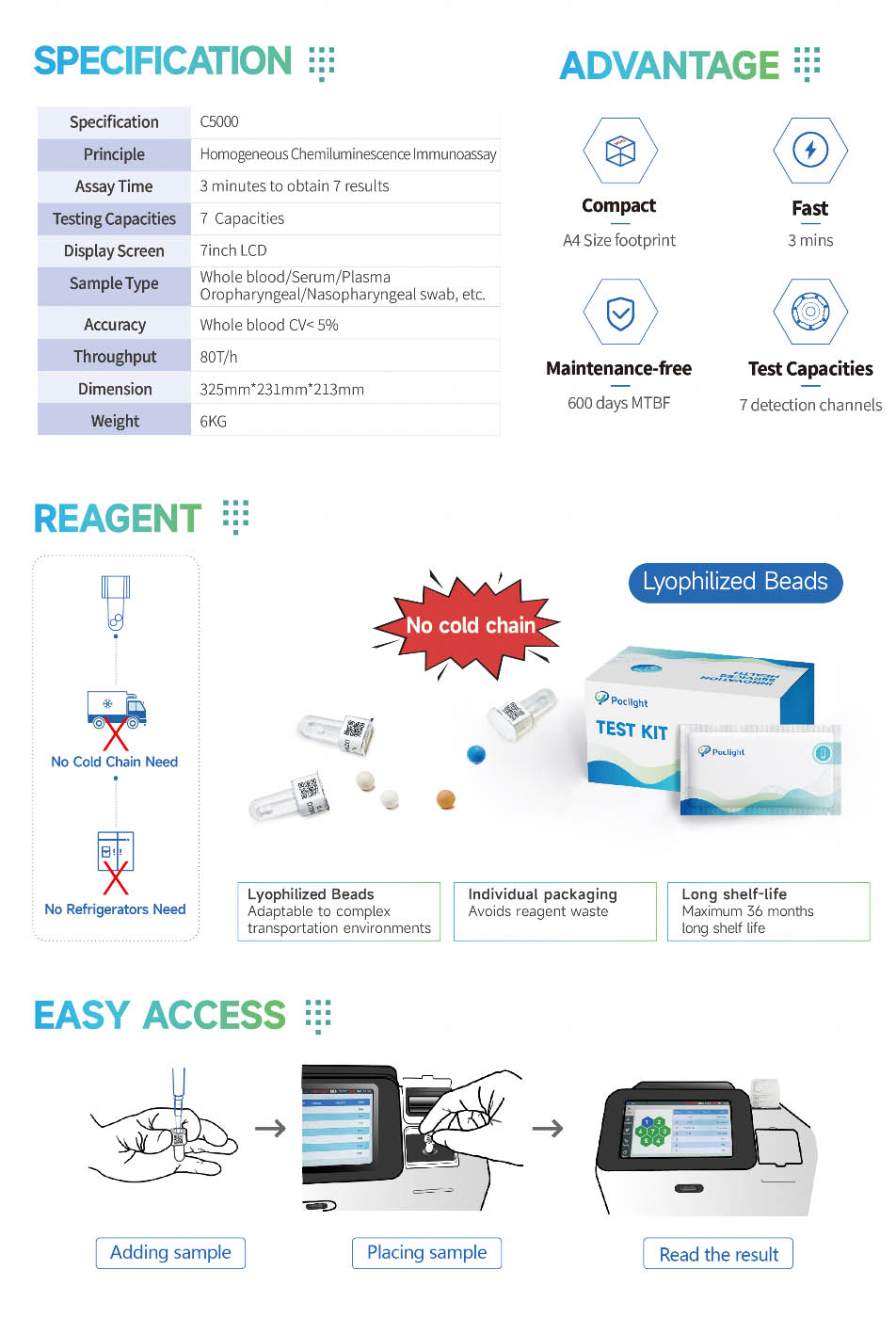1. Molecular detection
Whether it is variable temperature PCR or isothermal amplification, fluorescence is the main detection method. After the luminescent group on the fluorescent probe is cut off, it is no longer in a quenched state and fluoresces under excitation.
2. Indirect immunofluorescence
A more typical product is a self-exempt test
In addition, this method is also used for the detection of respiratory diseases
3. Fluorescence immunochromatography
Colloidal gold is often considered to be a qualitative product, while fluorescence is called a quantitative product. In fact, isn't it essentially a type of product? It's just that the fluorescence signal is stronger and the sensitivity is higher.
However, while the sensitivity is higher, it is also accompanied by the fact that the false sun is easier to detect, and it is more difficult to debug and produce.
4. Fluorescence microfluidics
Similar to immunochromatography, microfluidic POCT uses fluorescence as the main way of signal presentation
5. Liquid phase fluorescence for a single person
The real fluorescent product still depends on the liquid phase. The most classic is ELISA. Although chemiluminescence is now the mainstream, ELISA can still occupy a corner and not be completely eliminated.
6. Homogeneous fluorescence
If the immunodiagnostic product chooses the technical path of homogeneity, the advantage is that the liquid path can be omitted, which can not only retain the characteristics of POCT products, but also improve the product performance. Only antigen-antibodies are bound together so that the fluorophore can deliver energy to produce fluorescence, or two ligands of luciferase combine to form an intact luciferase that catalyzes the substrate to produce fluorescence.
7. Flow cytometry and flow cytometry fluorescence bind immune cells through fluorescein-labeled antibodies, and then identify them by detecting fluorescence information and cell size by optical path. The market is also steadily increasing. It used to be small, but now it is small and beautiful, and it is getting more and more attention from the industry.
Chemiluminescence and immunofluorescence are both detection methods used in a variety of scientific and medical applications. While they both have their uses and benefits, there are several reasons why chemiluminescence might be preferred over immunofluorescence in certain scenarios:

1. Sensitivity: Chemiluminescence is often considered more sensitive than immunofluorescence. This means it can detect lower levels of a substance, which can be particularly useful in applications where the substance of interest is present in very small amounts.
2. Dynamic Range: Chemiluminescence typically has a wider dynamic range compared to immunofluorescence. This means it can accurately measure a broader range of concentrations, making it more versatile in its applications.
3. Simplicity: The chemiluminescence process can be simpler than immunofluorescence, as it doesn't always require the use of secondary antibodies or complex labelling procedures. This can make the process quicker, easier, and less prone to error. C5000 has very easy access: you only need adding sample to the reagent, then placing in to the analyzer, and you can read the result. Dry Chemiluminescence Immunoassay Analyzer
4. No Photobleaching: Unlike immunofluorescence, chemiluminescence does not involve any light excitation and therefore, there is no risk of photobleaching. This can be a significant advantage in long-term imaging studies.
5. Cost-Effectiveness: Chemiluminescence can be more cost-effective than immunofluorescence, particularly for high-throughput or large-scale studies, as it often requires fewer reagents and less expensive equipment. C5000 reagent are lyophilized beads, so no cold chain needed, and no refrigerators needed, also Maintenance-free, Greatly reduce the cost of the customer.(Total Thyroxine (TT4) Test Kit)
In conclusion, while both chemiluminescence and immunofluorescence have their advantages and uses, chemiluminescence can offer several benefits that might make it a more suitable choice for certain applications. However, the decision on which method to use should be based on the specific requirements of the experiment or study.

 English
English français
français русский
русский español
español português
português العربية
العربية 日本語
日本語 Türkçe
Türkçe हिंदी
हिंदी Indonesia
Indonesia 







 IPv6 network supported |
IPv6 network supported | 